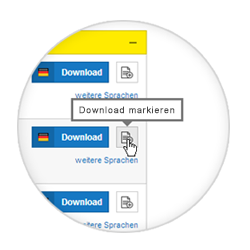Controllers and Electronic Signal Conditioners
What is signal conditioning?
A controller, or signal conditioner, is a device that converts one type of signal into another type of signal. Controllers translate analogue or digital signals from measuring instruments into information. They process and integrate data into information that can be easily read by an indicating instrument or control system.
Controllers perform a variety of different tasks ranging from simple displays to intelligent units with the ability to control pumps, valves, or motors. These devices are designed to isolate, convert, and amplify communication signals. You can even find controllers that process sensor data from multiple instruments and send the data via wireless transmission, Ethernet, or other communications protocols to the cloud. Most of today’s controllers and signal conditioners do a combination of these functions.
Display
- Controllers receive an electrical signal input from a sensor or gauge. The signal is then translated into an output as useful information for the operator.
Isolation
- Electrical isolation is used for galvanic separation of intrinsically safe applications and signal transmission of Ex-approved 4…20 mA sensors in hazardous areas. These isolation barriers prevent sparking and arcing by limiting current. An intrinsically safe barrier will shut down if too much current is present.
Conversion
- The most common type of conversion is an analog-to -digital converter. These take a 4…20 mA sensor signal input and turn it into a digital output for an indicating instrument or control system.
Amplification
- Signal amplification increases the overall magnitude of the signal. This increases the resolution of an input signal, and it increases its signal-to-noise ratio.
VEGA Controllers
VEGA controllers gather measured values from sensors in a vessel, tank, or silo. Through an adjustment in the controller, the measured values can be adapted to the specific conditions at the measuring point.
Values appear in the display, if applicable, and those measurements can be output through the integrated current outputs that are used to control external displays or higher-level control devices.
VEGADIS Series
VEGADIS controllers are external display and adjustment modules for 4…20 mA sensors with HART protocol. These devices allow users to view measurement values of sensors at a distance or from a safe location. The VEGADIS 81 operates with all VEGA sensors, and it is directly connected to the electronics of the sensor from which it is also powered. The VEGADIS 82 and VEGADIS 176 are loop powered displays, placed in any position directly in the signal cable in a 4..20 mA current loop.
Choosing the right VEGADIS
Related products
Advantages:
- Reliable and simple adjustment through clear text indication with graphic support
- Universal use through HART standard parameters
- Measured value indication and sensor adjustment in an easily accessible position
VEGATOR Series
The VEGATOR series controllers can perform a number of tasks and functions. These controllers are used for level detection with a relay output. In other words, these work with VEGA’s switching instruments, and the controller can start, stop, slow down, or speed up a process based on the information it receives from a sensor or sensors. Typical applications are for monitoring for overflow or dry run protection.
VEGATOR controllers provide safe power and act as a barrier for intrinsically safe applications. These devices can also provide feedback to operators, running a function test on the switch electronics to replace annual wet tests to save time and money. Throughout the year, these controllers can also monitor the switch for failure and monitor the wiring for open or short-circuited conditions.
Choosing the right VEGATOR
Advantages
- Simple adjustment of the switching point with potentiometer
- Simple installation through carrier rail mounting as well as detachable, coded terminals
- Visible status indication via LED
VEGATRENN Series
The VEGATRENN is used for galvanic separation, intrinsically safe power supply, and signal transmission of IS or Ex ia-approved 4…20 mA sensors in hazardous areas. The separate power supply ensures a reliable measured value transmission. These devices can take universal voltage sources (20-230Vac or 24-65Vdc) and translate it into a safe, low voltage electricity in the hazardous areas. This signal conditioner serves as a hazardous area barrier if power exceeds a certain limit, preventing sparking or arcing and serving as a hazardous areas barrier.
Choosing the right VEGATRENN
Advantages
- Simple installation because no additional voltage supply required
- Simple installation through carrier rail mounting as well as detachable, coded terminals
- Reliable separation of intrinsically safe and non-intrinsically safe circuits
VEGAMET Series
The VEGAMET series controllers power connected 4…20 mA and/or HART sensor(s), then process and display the measured values. These are ideal for simple control tasks in level, gauge, and process pressure measurements. Interfaces for simple remote data transmission can be integrated for inventory management in remote storage silos. Comprehensive adjustment functions enable individual adaptations to the respective application.
Choosing the right VEGAMET
Advantages
- Simple data recording and history retrieval from instruments with digital interface
- Simple integration into the Intranet/Extranet through integrated Web server
- Steady utilization of the pumps through integrated pump management
- Overfill and dry run protection with programmable relays
- Panel mount and DIN rail options available
Export this article
Download as PDFShare this article
Comments ({{comments.length}})
{{getCommentAuthor(comment, "Anonymous")}} {{comment.timestamp | date : "dd.MM.yyyy HH:mm" }}
{{comment.comment}}






